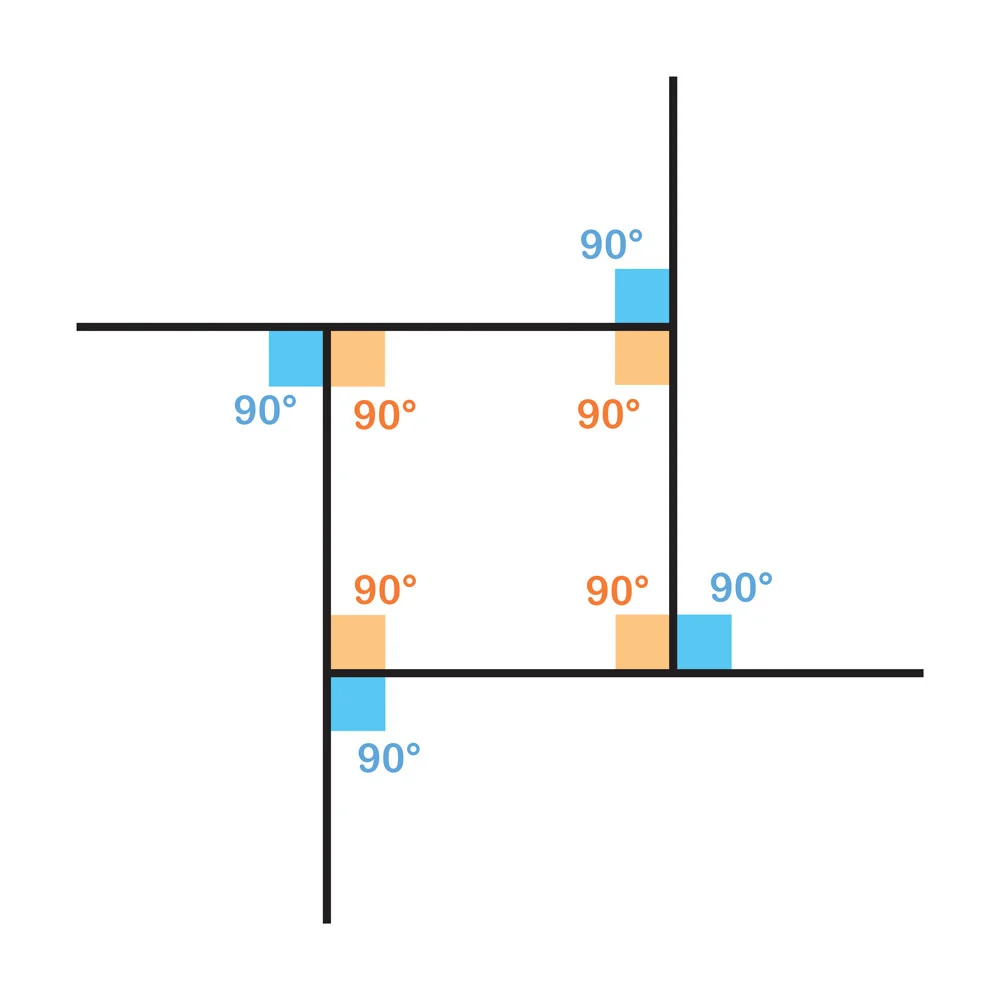Alternate Interior Angles emerge as a fascinating geometric phenomenon when a transversal intersects two lines, resembling a scene where a bridge (the transversal) crosses two parallel roads. Envision these parallel lines akin to railway tracks and the transversal slicing through them. The angles nestled within the parallel lines, yet lying on alternating sides of the transversal, are known as alternate interior angles. The intriguing part is that if the lines are parallel, these angles mirror each other in size. This is not merely an intriguing geometry tidbit; it’s a foundational geometric principle that illuminates the intricate dance of lines and angles. Its significance extends from foundational geometry lessons to the intricate world of architectural design, showcasing geometry’s inherent order and symmetry.
Exploring the Significance of the Alternate Interior Angles Theorem
The theorem surrounding Alternate Interior Angles is a pivotal axiom in geometry, articulating the interplay between angles and intersecting lines. It articulates:
1. Intersection of Parallel Lines by a Transversal:
When a transversal intersects two parallel lines, the alternate interior angles formed are congruent – a geometric symmetry that reveals the unity of angles lying opposite each other across the transversal.

2. Converse of the Theorem:
Equally pivotal is the theorem’s converse, asserting that if a transversal produces equal alternate interior angles on intersecting lines, those lines are indeed parallel.
This theorem is not just a geometric hypothesis; it’s a foundational concept that underpins our understanding of parallel lines, angles, and their relationships, playing a critical role in geometric proofs and practical problem-solving.
Recommended Reading: Exploring the Fascinating World of Triangle Vertices
Alternate Interior Angles in Real-world Contexts
In the real world, the concept of alternate interior angles manifests in various forms:
1. Architectural Precision:
Architects frequently leverage this principle in design, ensuring structural integrity and aesthetic elegance through precise angular calculations.
2. Artistic Patterns:
In art, these angles are often used to create captivating patterns and optical illusions.
3. Engineering Applications:
Engineers rely on this principle for accurate design and construction of structures like bridges, where angle precision is paramount for safety and effectiveness.
Applying the Theorem in Practical Scenarios

To apply the Alternate Interior Angles Theorem:
1. Identifying the Elements:
Recognize the parallel lines and their intersecting transversal.
2. Finding the Angles:
Locate the alternate interior angles, nestled inside the parallel lines but on alternating sides of the transversal.
3. Verification through Measurement:
Measuring these angles reveals their unity, a fact frequently employed in geometric proofs and real-world applications.
An Illustrative Example
Consider a scenario where a transversal cuts across two parallel lines, resulting in the formation of alternate interior angles labeled as A and B. According to the theorem, the size of angle A is equal to that of angle B. This principle can be confirmed either by physically measuring these angles or by constructing a geometric proof.
Recommended Reading: Understanding Axis of Symmetry
Conclusion
The concept of alternate interior angles transcends academic geometry, finding resonance in the everyday world, from architectural structures to artistic creations. This concept is not just a segment of mathematical theory but a practical tool shaping our understanding of the physical world, from artificial structures to natural forms. Geometry, thus, is a testament to the harmonious and balanced principles governing our universe, with alternate interior angles exemplifying this exquisite symmetry.
Frequently Asked Questions About Alternate Interior Angles
Q1. What Gives Alternate Interior Angles Their Equality?
Answer: Their equality stems from the properties of parallel lines intersected by a transversal. Per the theorem, when a transversal intersects parallel lines, the alternate interior angles formed are always equal, a fundamental characteristic in Euclidean geometry.
Q2. How Is the Equality of Alternate Interior Angles Proven?
Answer: A standard proof involves the concept of corresponding angles, which are also equal when a transversal intersects parallel lines. Demonstrating that an alternate interior angle is equal to its corresponding angle validates their equality, relying on the parallel nature of lines and congruence of angles.
Q3. Do Alternate Interior Angles Remain Congruent with Non-Parallel Lines?
Answer: No, this property is exclusive to parallel lines intersected by a transversal. For non-parallel lines, alternate interior angles do not necessarily share congruence and can vary significantly.
Q4. Real-World Applications of Alternate Interior Angles?
Answer: These angles find applications in architecture, engineering, and design that are instrumental in creating precise and structurally sound designs. They are crucial in road and intersection design, particularly in overpasses and junctions.
Q5. Role in Solving Geometry Problems?
Answer: Understanding alternate interior angles is vital to solving numerous geometry problems, especially those involving parallel lines and transversals. They are fundamental in proving triangle congruence and similarity, aiding in complex geometric constructions and proofs.
Moonpreneur understands the needs and demands this rapidly changing technological world is bringing with it for our kids. Our expert-designed Advanced Math course for grades 3rd, 4th, 5th, and 6th will help your child develop math skills with hands-on lessons, excite them to learn, and help them build real-life applications.
Register for a free 60-minute Advanced Math Workshop today!













